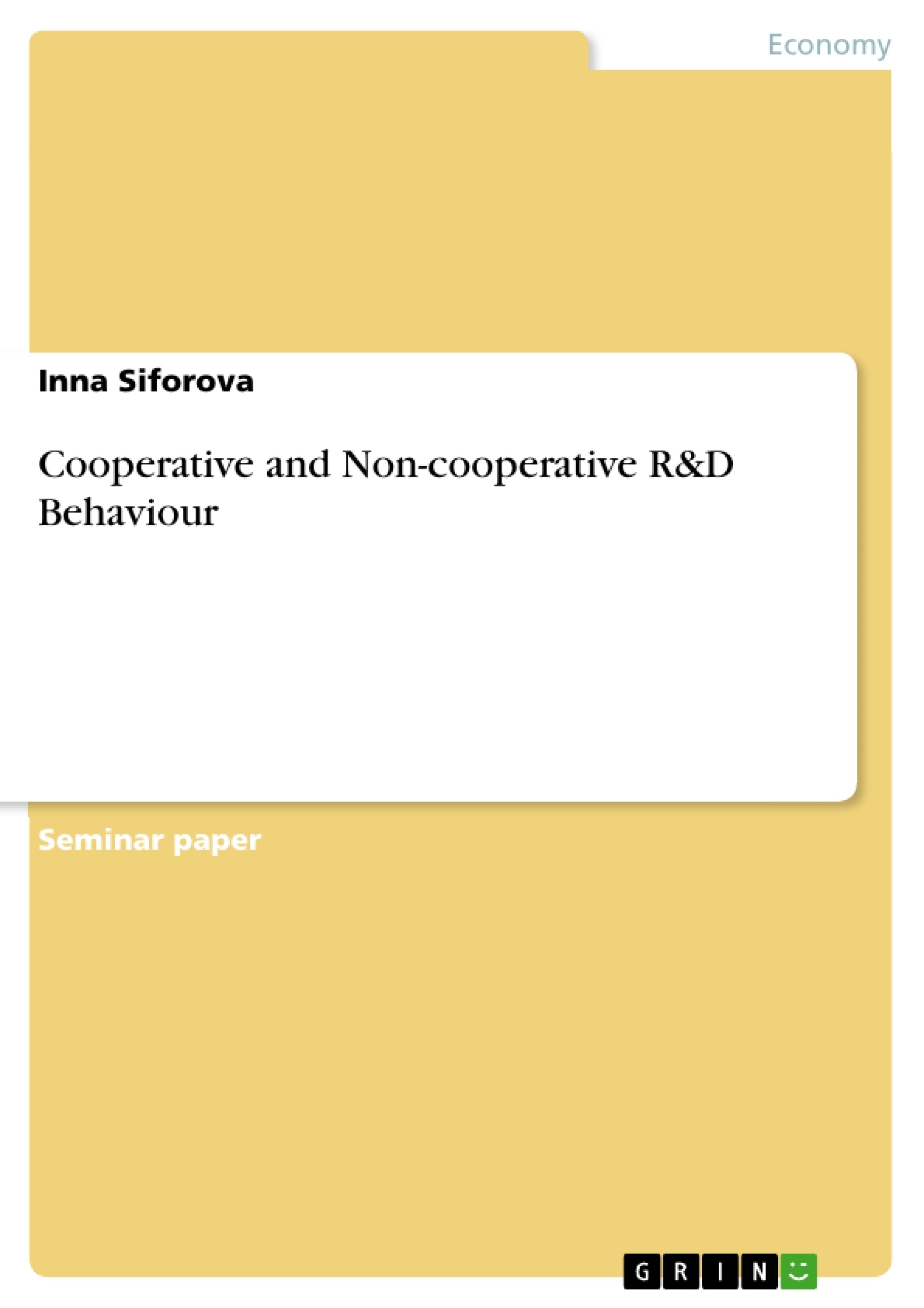Technological progress is one of the most important factors guaranteeing economical growth in a long
term. The present paper deals with a question if cooperative R&D can increase the intensity in
research activities. What are the advantages resulting from cooperative agreements? Do they also face
any risks? These questions are discussed in the second section of the paper. The intention is to
introduce the basic model of cooperative and non-cooperative R&D behaviour, described by
D’Aspremont and Jacquemin. In section 3, individual cases of cooperative behaviour are discussed
and compared, while in the next step, the impact on the welfare is presented. Section 4 deals with the
model by Kamien, Muller and Zang. After a reasonable simple description, each single case is
evaluated and the most recommendable solution regarding the research activities is introduced. A
conclusion follows.
CONTENTS
1. INTRODUCTION
2. RESEARCH AND DEVELOPMENT
2.1.R&DCOOPERATION BETWEENFIRMS:ADVANTAGES VS.RISKS
2.2.R&DSPILLOVERS
3. COOPERATIVE AND NON-COOPERATIVE R&D BEHAVIOUR
3.1.NON-COOPERATING IN BOTHR&DANDOUTPUT
3.2.TECHNOLOGYCOOPERATION
3.3.RESEARCHJOINTVENTURE
3.4.SOCIALWELFARECOMPARISON
4. THE MODEL OF KAMIEN, MULLER AND ZANG
5. CONCLUSION
6. APPENDIX
7. REFERENCES
- Quote paper
- Inna Siforova (Author), 2012, Cooperative and Non-cooperative R&D Behaviour, Munich, GRIN Verlag, https://www.grin.com/document/271014
-

-

-

-
Upload your own papers! Earn money and win an iPhone X. -

-
Upload your own papers! Earn money and win an iPhone X. -

-
Upload your own papers! Earn money and win an iPhone X. -

-
Upload your own papers! Earn money and win an iPhone X. -

-
Upload your own papers! Earn money and win an iPhone X. -

-
Upload your own papers! Earn money and win an iPhone X. -

-
Upload your own papers! Earn money and win an iPhone X.

